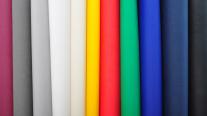Extrapack OOD
About us
Extra-Тex is a brand of Extrapack OOD, specializing in the production of non-woven polypropylene textiles, spunbond and meltblown technology.
The company is EU leader in manufacturing of of nonwovens, advertising bags, and flexible packaging solutions.
Our product groups
Our application areas / Solutions
Downloads
Documents
Keywords
- spunbond
- nonwovens
- TNT
- retex
- spinnvlies
Our Products

PP-Spinnvlies
PP spunbond, also known as polypropylene spunbond, is a non-woven fabric made from polypropylene fibers. The process of creating PP spunbond involves extruding molten polypropylene through fine nozzles, which then solidifies and forms filaments. These filaments are then laid down in a random pattern and bonded together using heat and pressure.
PP spunbond has many applications due to its properties, such as being lightweight, strong, and breathable. It is commonly used in the manufacturing of hygiene products like diapers and sanitary napkins, as well as in the medical industry for items such as surgical gowns and face masks. It is also used in the construction industry for roofing and insulation, as well as in agriculture for crop coverings and weed barriers. Additionally, it can be used in various packaging applications, such as for wrapping furniture and electronics, and in the production of shopping bags.
ExtraTEX offer PP Spunbond in weight range between 10 g/m² to 200 g/m² and width between 2 cm and 320 cm.
PP spunbond can be made in different colors by adding masterbatches to the polymer resin before it is extruded. The masterbatches are blends of pigments and additives that are specifically designed to be compatible with the polymer resin.

Meltblown
Meltblown is a nonwoven fabric produced through a distinctive process known as meltblowing. In this process, a polymer material is melted and then extruded through minuscule nozzles under high pressure. The resultant melted material is blown by hot air to form fine fibers. These fibers are collected on a moving conveyor to create a fabric web.
During manufacturing, these meltblown fabrics typically undergo an electrostatic charging process. This involves passing the material over a series of high-voltage wires, creating a static charge in the fibers. This charge plays a pivotal role in many meltblown fabric applications, particularly filtration, as it aids in attracting and capturing particles and contaminants.
Meltblown fabrics have wide usage in various applications. These include air and liquid filtration systems, medical masks and gowns, hygiene products, and oil sorbents. The intricate network of fine fibers in these fabrics results in a dense and efficient filtering structure capable of trapping tiny particles, including bacteria and viruses.



